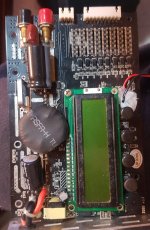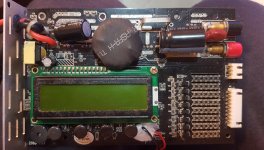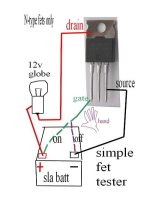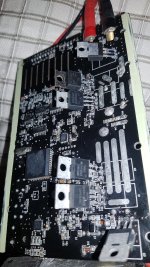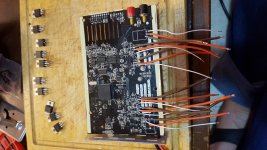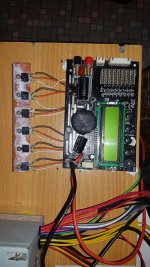My first Post in this forum.  Well I was stupid enough to connect my icharger 208b to my ebike battery not thinking of the 32V Voltage limit. It has been sitting around for about a year now. Before throwing it away I decided to check the insides again.
Well I was stupid enough to connect my icharger 208b to my ebike battery not thinking of the 32V Voltage limit. It has been sitting around for about a year now. Before throwing it away I decided to check the insides again.
The input voltage regulator was heating up when i connected the charger to the input voltage. So I guess that thing is gone.
Pin 3 is connected to Ground
Pin 4,5 somehow to Vin
Pin 2 somehow to the output voltage.
Long story short. It seems to be an LM2587S ADJ
I don't think it is a fixed Voltage because somewhere after PIN 2 there is a "voltage diveder" with two resistors. I couldn't exactly measure the values but the fixed voltages would connect directly to Vout as Pin 2 is the feedback line.
In the progress of desoldering i sadly messed up the pad of the pcb for pin 2. Maybe I can fix it somehow. First I'll order one these.
@FalconFour: Maybe it helps if you plan to fix your 3010b.
The input voltage regulator was heating up when i connected the charger to the input voltage. So I guess that thing is gone.
Pin 3 is connected to Ground
Pin 4,5 somehow to Vin
Pin 2 somehow to the output voltage.
Long story short. It seems to be an LM2587S ADJ
I don't think it is a fixed Voltage because somewhere after PIN 2 there is a "voltage diveder" with two resistors. I couldn't exactly measure the values but the fixed voltages would connect directly to Vout as Pin 2 is the feedback line.
In the progress of desoldering i sadly messed up the pad of the pcb for pin 2. Maybe I can fix it somehow. First I'll order one these.
@FalconFour: Maybe it helps if you plan to fix your 3010b.



